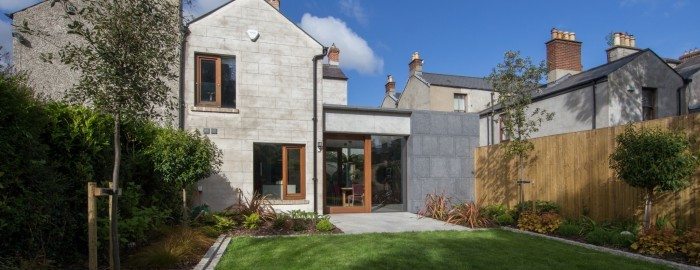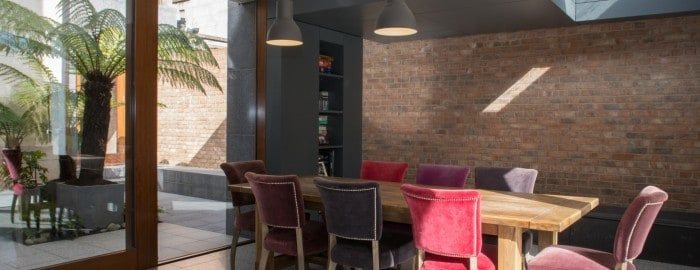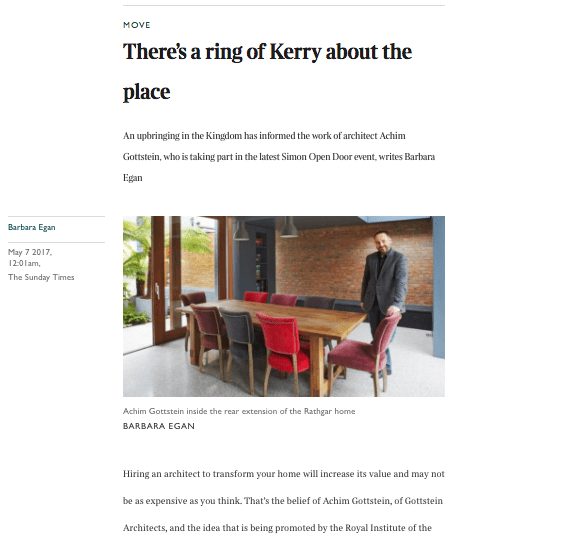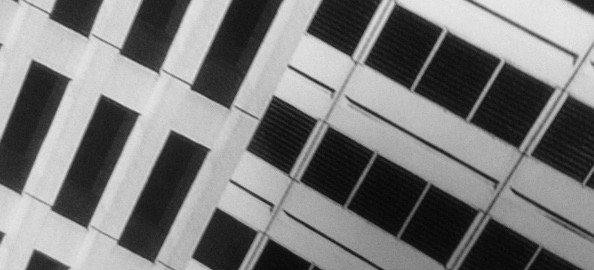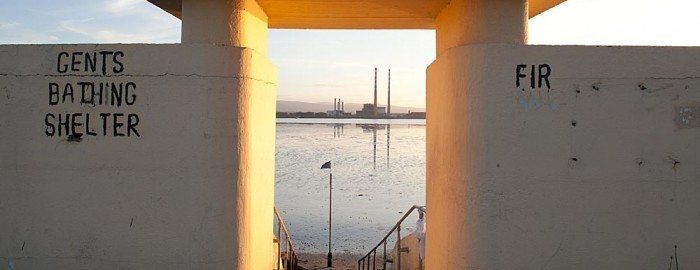-
Photographing houses, houses for photographers
The Shortlist for the sterling prize was recently released. The list has a diversity of projects from a University campus to Hastings pier to the British Museum Conservation and Exhibitions centre. One project that I thought was interesting was the RIBA London Award 2017 and RIBA London Building of the Year 2017 Award which went to the photography studio and house for Juergen Teller by 6a architects.
The architects describe the project as “The project expertly exploits a typically London condition. Constrained by a long and narrow industrial plot at the rougher edge of Ladbroke Grove; its only face nestles between cheap developer housing, an industrial estate and the hinterland of the Westway.”
This poises a question, what should a house for a photographer look like. Or should a photographers house reflect their equipment, their culture , their influence.
From the photographs shown the project seems blank out the context. The project forms two courtyards that protect the studios from the outside. Is there a metaphor of some sort in the planning. It seems that the main accommodation is like a gatehouse over the entrance to the studio. So in this model of housing? The work is placed at the figurative and literal centre of the plan. Is this a message to the world? from Teller. Maybe! To celebrate the completion Juergen presented a self portrait in the space! The man at work!
Recent winners of the sterling prize such as David Chipperfield could inform this view. Chipperfield won the prize in 2007 for The Museum of Modern Literature in Marbach am Neckar, Germany. His private house in Richmond for Nick Knight in 1998-2001 is an essay in cool articulation of a suburban dwelling. It masks the original form of the house build by Knights father. The impression created is distant from the flamboyant anarchy of Knights photography. The connection between what knight creates at www.showstudio.com and his house seem distant.
One aspect of the house that appeals to me is the concession to the clients profession in the use of a “framing portal” .The portal connects elements of the architectural composition together. It also “frames” a view of the garden from the interiors. The frame acknowledges what the photographer does without making a literal translation of a camera.
In both projects the aesthetics are quite similar; In situ concrete, plaster, block-work , a subdued palette of tones, rigid geometry. The outcomes are quite different. Tellers house, places him a “hero” with his work at the centre of the world. Nick Knights house seems more to be a refuge from which to view the world.
-
Architectural Interior photography In Dublin
Some recent Architectural Photography featured in the Sunday Times Magazine in May. The project was for Gottstein Architects showing a recent refurbishment and renovation of the project in south Dublin. The link to the article :Sunday Times Article
-
Shooting Space: Architecture in Contemporary Photography Elia Redstone
Shooting Space is an anthology that examines the relationship between photographers and architecture. The book is divided into five parts that presents a vary of approach’s to the subject. The first chapter is prefaced by Julius Schulman quote:
“ I sell architecture better and more directly and more vividly than the architect does” .
This sets the tone for much of the book. It also highlights the problem of how architecture is represented. The images from this chapter avoid the conventions of blues skies, vertical lines , perfect context etc. Of interest are images by Iwan Bann and Michele Nastasi.The book is representative of the global architecture covering Asia, Europe, The Americas and Middle East. Africa is not represented extensively. Work by Mikhael Subotzky & Patrick Waterhouse on Ponte city could have address this imbalance. The book Ponte city was published in 2014 however most of the photographers were from 2008 onwards.
Michael Wolf , Thomas Struth and Nuno Cera feature in the “Cityscapes of change” chapter. The project “Architecture of Density” by Michael Wolf showcases the density of development in Hong Kong. Thomas Struth documents cities in his “Unconscious Places” project. The series seeks to encapsulate the sense of a place in a single image. Nuno Ceras’ images investigate the physical and metaphorical nature of space. The images present layers images of reflections from high rise hotel rooms. Sze Tsung Leong visual documentation of China are very compelling also.
Man-altered Landscapes catalogues work by Peter Bialobrzeski , Nadav Kander, and Armin Linke amongst others. The project “Architecture of Authority “ by Richard Ross is also featured. The images is “explore the nature of institutionalized space” and present an architecture that shows the “failure of moderation, politics….humanity”.
The strongest parts of the book show photographers working in a documentary tradition. The chapters on conceptual photography speak less about “Shooting space” and are more concerned with creating new visual spaces. Typically, the images are made by digital manipulation of some sort. Overall the book presents a good anthology of photographers and their approach to photographing the city.
http://uk.phaidon.com/store/architecture/shooting-space-9780714867427/
Iwan Bann http://iwan.com/iwan_index.php
Michele Nastasi http://www.michelenastasi.com/
Micheal Wolf http://photomichaelwolf.com/#architecture-of-density-2/1
Thomas Struth http://www.thomasstruth32.com/bigsize/index.html
Nuno Cera http://www.nunocera.com/
Sze Tsung Leong http://www.szetsungleong.com/
Nadav Kander http://www.nadavkander.com/
Armin Linke http://www.arminlinke.com/
Peter Bialobreski http://www.bialobrzeski.de/work/paradise_now/ParadiseNow-18.html
Richard Ross http://richardross.net/
Mikhael Subotzky & Patrick Waterhouse http://www.subotzkystudio.com/ -
More Than Concrete Blocks
More than Concrete Blocks: Dublin City’s twentieth-century buildings was launched with great excitement last week. The book is the culmination of almost five years of work. Most of the new architectural photography was commissioned by Dublin City Council for this project. The book provides an authoritative account of Dublin’s social, cultural and political history. The built history is used as evidence in the account of the century. The book is a brilliant and entertaining guide to the 20th century Dublin. It is a must have for anyone interested in Dublin, Architecture and any type of social History
More than Concrete Blocks: Dublin City’s twentieth-century buildings is a three-volume series of architectural history books which are richly illustrated and written for the general reader. Unpacking the history of Dublin’s architecture during the twentieth century, each book covers a period in chronological sequence: Volume I, 1900–40; Volume II, 1940–73; Volume III, 1973–2000. The series considers the city as a layers and complex place. It makes links between Dublin’s buildings and Dublin’s political, social, cultural and economic histories.
http://www.fourcourtspress.ie/books/2016/more-than-concrete-blocks/
-
Buying a camera for Architectural photography PART 1
Buying a Camera for Architectural Photography
Sometimes I’m asked what would be a good camera for architectural photography.
How will you use the camera? is the first question to ask when you are thinking about buying. Most people have diverse interests. They will what a camera that matches those interests. For many it is pictures of friends, family, landscapes, travel, a bit of architecture and occasional sunset. Portability is a bonus, and expense a concern.
My personal belief is that the best type of camera is one that you can pop in a pocket and bring with you everywhere. The old joke is : ” The best camera is the camera you have with you”. For this reason smart phone cameras have much to offer. I have listed the types of suitable camera and their advantages and disadvantages.
My recommendations :
- 1. Smart phone
- 2. Compact digital camera
- 3. Micro 4/3 ( Four Thirds)
- 4. Cropped frame Digital SLR
- 5. Full Frame Digital SLR
For most photography I would recommend getting the most portable camera that you feel comfortable with. The reason is that many people leave their “good” camera behind on day trips because of the weight of the camera. A heavy camera and a bag of lens with a tripod can weight up to 10kg. Photography should be about creative image making not weight lifting.
1. Smart Phone
Smart phones bring high resolution, high quality images to everyone. They make sharing images and editing images a pleasure. They do have some limitations:
- Smart phones use a very small image chip, because of this they will always have a very long depth of field ( this can be a good thing for some photography).
- The user interface on smart phones can be a bit difficult to use, a dedicated camera functions better as a camera.
- The camera function on smart phones can be very slow also, not so good for candid pictures.
- The optics on smart phones are never as good as a dedicated camera.
- Smart phones can be expensive costing from 200 to 1000 euro/ dollars.
- Smart phones have to be charged every day, most dedicated cameras will have a good battery life.
They do have some advantages over traditional cameras:
- All images will have GPS data embedded in the images, this is an advantage if you are trying to find images or locations at a later date
- Many smart phones will provide automatic backup to the cloud for all your images
- The remote cloud access means that you can access your images from any location
- Many people bring their phone everywhere
- The ability to share and edit images is a very attractive feature that allows social engagement
- The small chip will give a very long depth of field, this can be great if you are photographing an architectural model ( its not so good for portraiture)
2. Compact Digital Camera
Most digital compact cameras produce amazing images. Compact digital cameras present a huge advantage of portability. Personally I feel this is of huge importance, how many times have I left my “good” camera at home because I didn’t want to carry it with a bag of lens around all day. Many of the top line compact cameras will offer comparable image quality to a digital SLR. A summary of compact camera advantages:
- Compact, this means that you’re more likely to bring it with you
- Sealed chip and lens unit, this means that dust will not get into the chip
- Many cameras offer a zoom that will give a good range of focal lengths from wide angle to telephoto .
- The best brands offer fantastic image quality, Olympus, Nikon, Fuji, Sony, Canon
- Many offer built in “effects” modes, producing convincing black and white, retro or positive film effects.
- Many will have a built in flash
The disadvantages of a compact camera are:
- Many compact cameras don’t offer a zoom that is sufficiently wide angle lens to be of use to those interested architecture ( but many will have a panorama function)
- The zoom lens in a compact camera tend to be mechanically powered which can sometimes be very slow to operate
- Optically the lenses tend to be very good, however the chip size on a compact camera is not the best for portraiture
- The mental connection between photography and cameras and photography has been replaced by a connection between a mental photography and the smart phone. Nowadays when we want to remember that we want to take ” good” photography we have to actively compel ourselves to bring the “good” camera. As a result the good camera is frequently left behind.
- At present compact cameras don’t tend to have the social, cloud backup features of smart phones, but that is changing
3,4,5 Micro 4/3 rds cameras, Cropped and Full frame Digital camera
All of these types of cameras offer better camera and optical performance, but the big trade-off is portability, weight and convenience. Personally I feel that the trade-off can be too high. DSLR’s are sometimes so expensive/heavy/complicated that they discourage use.
The big advantages of DSLR’s are:- Superior optics ( but only if you invest in good lenses).
- Bigger chip, is better for portrait photography.
- Higher resolution.
- A full system of accessories etc.
- They are a serious camera, if you’re using one there is a tenacity to dedicate more time and concentration to the photography.
The disadvantages are:
- Expense.
- Not portable.
- To get the best out of the camera they frequently require a tripod.
- Generally no flash on the higher end models.
- To get the very best out of the image they require a considered and methodical approach to image making.
- If the lens is detachable the chip can get covered in dust.
In summary of the above, if you want to upgrade your architectural photography I would recommend a good compact camera over a DSLR. Others will disagree no doubt. If you have about 30000 euro to burn you could also opt for someone from this company.

